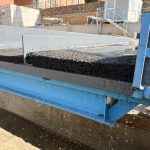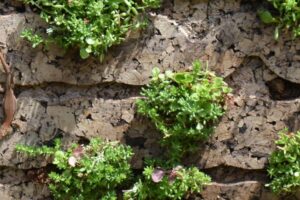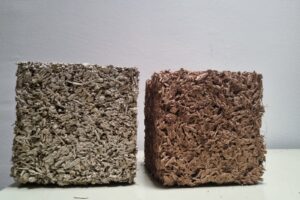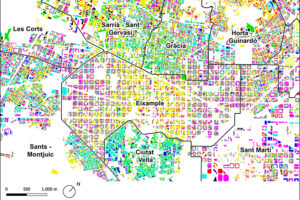
OPTIMA: Optimisation of Photovoltaic Technology for Self-Consumption in Buildings
June 23, 2025
BITSDRAIN: Porous Bituminous Pavements for Sustainable Urban Drainage
July 8, 202504/07/2025
The Laboratory of Applied Bioacoustics (LAB) at the Universitat Politècnica de Catalunya – BarcelonaTech (UPC) is leading the SEAMPHONI project (Sensing and Evaluating offshore biodiversity with Acoustics, Molecular and Imagery tools for an intelligent digital twin). It aims to transform the monitoring of marine biodiversity through the creation of an intelligent marine digital twin that will integrate innovative tools such as environmental DNA, acoustics and underwater imaging.
As our oceans face increasing pressure from human activity, a new approach to marine conservation is urgently needed. By integrating cutting-edge monitoring solutions, the SEAMPHONI project seeks to develop real-time, cost-effective tools that will revolutionise how biodiversity, ecosystem health, and the effectiveness of protection and restoration measures are assessed. The goal is to create inclusive and scalable systems to ensure no part of the ocean remains invisible or unknown.
SEAMPHONI aims to transform offshore marine biodiversity monitoring. Through the integration of innovative tools such as environmental DNA (eDNA) — which allows species to be identified from genetic traces present in the water — acoustics, and underwater imaging, an intelligent marine digital twin will be built. It will be interoperable with the European Digital Twin Ocean (EDITO). This virtual replica of the marine ecosystem will offer a comprehensive and dynamic view of the environment, based on systems and data science methodologies and open-source software.
The ambition of the project goes beyond technology, as SEAMPHONI also aims to support international marine policies and reconnect society with the ocean — even through artistic outreach.
One of the project's objectives is to listen to the underwater symphony of life and sound that characterises Europe’s most remote and vulnerable marine regions, including Areas Beyond National Jurisdiction (ABNJ), which remain largely unprotected.
Impact
The project represents a groundbreaking solution for marine conservation, enabling governmental agencies, the scientific community, and local stakeholders to access baseline and real-time data, as well as predictive scenarios. The aim is to move towards more continuous, predictive, and affordable monitoring of marine biodiversity, thus contributing to the identification of priority protection areas and supporting the goals of the Global Biodiversity Framework 2030 and the EU Mission for Oceans and Inland Waters.
Budget, Consortium and Funding
The project has received €11 million in funding from the Horizon Europe programme and involves 24 European partners, including research centres, universities and companies. It has a duration of four years (June 2025 – June 2029).
You want to know more?
Related Projects
- The La Volta project foresees the construction of a large Catalan vault pergola within the Llars Mundet campus, in the Montbau neighbourhood (Horta-Guinardó district). This structure will become a new architectural landmark for Barcelona, combining traditional construction techniques with contemporary innovation. The project involves the Rehabilitation and Architectural Restoration Research Group (REARQ), at the Universitat Politècnica de Catalunya - BarcelonaTech (UPC), and is led by the Architects’ Association of Catalonia (COAC) and the Barcelona Provincial Council.
SATE-VEG: A system for energy renovation of buildings that helps reduce the urban heat island effect
Researchers from the Architecture, Energy and Environment (AiEM) group at the Universitat Politècnica de Catalunya - BarcelonaTech (UPC) have developed SATE-VEG, an external thermal insulation system with a vegetal coating that offers seasonally adaptive thermal behaviour, enhances urban biodiversity and promotes positive health effects. The system is made from organic materials, requires low maintenance and consumes minimal water.- A research team from the Interdisciplinary Group on Building Science and Technology (GICITED) at the Universitat Politècnica de Catalunya – BarcelonaTech (UPC) is leading the BioSAFE project, which aims to develop sustainable building envelopes —mainly façades— designed according to sustainability, comfort and safety criteria, with particular attention to their acoustic behaviour and fire performance.
- The Architecture, Energy and Environment (AiEM) research group at the Universitat Politècnica de Catalunya - BarcelonaTech (UPC) has characterised Barcelona’s residential buildings according to their capacity to adapt to climate change. This study is part of the project ‘VeUvE: Urban havens for vulnerable zones’. The work highlights the climate inequality conditions present across different areas of the city and will help to better define the priorities and energy renovation strategies for its districts.






